1. RTDs is the fastest-growing category within alcohol
2. Pre-mix cocktails are the only segment in growth
3. Seltzers are struggling – but lighter RTD options remain in demand
4. Symbols & independents must stock key products to avoid falling behind the market

1. RTDs is the fastest-growing category within alcohol
For retailers who are looking to drive their alcohol sales and profits, there are few better segments to focus on than ready-to-drink products. While they have remained a popular choice for years, current market conditions are ensuring RTDs are truly having their time in the sun. The breadth of flavours they offer, the convenience of the format, and their lower price point compared to their equivalents in pubs and bars make RTDs the right product at the right time for cash-conscious customers and busy summer socialisers.
“The RTD alcoholic beverage market is in growth, up +4.7% on last year in the past 12 months, driven by average volume price, with volumes down on last year by 6.8%,” says Alex Lawrence, senior strategic insight director at Circana. “Value sales growth has improved slightly in recent time periods (L6M, L13W) as average volume price growth slowdown helps to slow volume decline.”
“This year, the market for the RTD category has experienced remarkable growth and is expected to continue growing by +12% in volume between 2022 and 2027,” says Hugo Hodgson, CEO and founder of Long Shot. “The broad and diverse category is rapidly changing. Providing quality drinks at an affordable price to be perceived as value for money is especially important.”
Retailers are seeing the growth in their own stores and are confident about the category’s future. Fi Malone, who runs Premier Tenby Stores and Post Office, says: “RTDs will only grow going forward, especially as everyone is re-establishing themselves with their finances. Minimum wage has increased, interest rates have declined, and we’ll see customers spending a little more.”
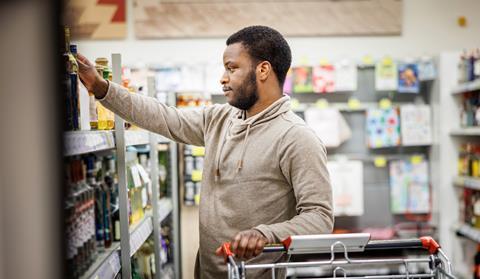
2. Pre-mix cocktails are the only segment in growth
The temptation for retailers might be to stock as many RTD products as possible to seize as much of the growth that they can, but this would be a mistake. Despite the overall growth in the category, drilling down it’s apparent that it’s in fact one area of the category that is really delivering.
The RTD category can be split into three segments. There are carbonates, which have a 24% share of the category and includes products like WKD. Then there are pre-mix cocktails, which includes products like Au Vodka Blue Raspberry and finally, pre-mix spirits, which contains lines like Jack Daniels and Coca-Cola and Absolut Vodka and Sprite.
“Of these segments only pre-mix cocktails are in volume growth, up +15.6% in the past 12 months vs last year, growing value share of the RTD market by 4.6ppts in the past 12 months, with both pre-mix spirits down -2.7ppts and carbonates -1.2ppts losing share,” says Circana’s Alex Lawrence.
“The growth in pre-mix cocktails is being fuelled by Au Vodka products Blue Raspberry and Black Grape and is category mix positive, with an average volume price of £9.17 per litre – significantly higher than the category average, which is £6.45.”
This is the area where brands are investing the most. Lauren Priestley, head of category development (off-trade) at Diageo, says: “More and more brands are launching their own mixed, pre-mix and cocktail RTDs, which is great to see. We know that the cocktail-at-home trend is still of interest to consumers, with premium cocktails accelerating the growth by 82%.
“For the less experienced at-home bartender who wants to enjoy a high-quality serve, creating bar quality serves can be challenging. In response to this, Diageo has launched a raft of new RTD innovations, including recently launched Cîroc Passion and Cîroc Summer Citrus RTDs, as well as The Cocktail Collection, a trio of bottled premium cocktails.”
And with the warmest weather of the year still hopefully ahead of us, the time is right to put these products front and centre of your offer. Jo Taylorson, head of marketing and product management for Kingsland Drinks, says: “Canned RTDs have been met with an explosion of popularity and this is set to grow even further as we head into the summer season.
“They’ve landed into drinks fixtures with bright, eye-catching packaging designs, purse-friendly deals and discounts, alongside punchier RRPs helping to drive spend. They have been embraced by those looking to try new drinks on the market without having to purchase expensive bottles or multiple spirits and mixers.
“They’re loved especially by urbanites and those who crave convenience and simplicity, looking for affordable drinks to suit their lifestyle and current trends.”
Promotional Content
How retailers can take advantage of the growing alcohol ready-to-drink market with Coca-Cola Europacific Partners

3. Seltzers are struggling – but lighter RTD options remain in demand
Five years ago, it felt like every week there was a new seltzer launch in the UK. The mix of sparkling water, alcohol and flavouring was proving popular in America and the theory was that, as so often happens in food trends, what proves popular in the US would eventually follow here. The combination of lighter calories, refreshing taste and striking packaging would prove as irresistible to consumers on this side of the Atlantic.
“Seltzers were terrible for us and probably one of the worst launches for years,” says Jack Matthews, Bradley’s Supermarket in Quorn, Leicestershire. “We only sold them if they were close to their sell-by date and they were heavily reduced. RTDs, however, are incredibly strong sellers for us.”
It’s a sentiment echoed by Fi Malone in Tenby. “We found seltzers were not strong sellers for us, but ready-to-drink products sell brilliantly – especially as we’re in a seaside town. Within spirits, rum didn’t really take off like gin has and it’s all about flavoured-spirits at the moment. It tastes nicer, which customers want.”
UK consumers are instead turning to RTDs that offer the lighter calories of seltzers but combine them with fuller, interesting flavours. Charlie Odunukwe II, founder of Riddles, a range of alcoholic iced teas mixed with tequila and rum, says: “Seltzers certainly have their place in helping the category to grow. However, the trends in convenience stores are drifting towards more flavoursome and low-calorie canned cocktails. With our ice tea products, we have a proposition that the British audience are very familiar with but have an alcoholic twist and only 99 calories.”
Seltzer brands are not giving up, however, and in fact are starting to find opportunities in the current market. Hugo Hodgson, CEO and founder of Long Shot, says: “Since launching we have found that in the UK consumers are slower to adapt to seltzers. While there is plenty of new product development still ongoing in the UK spirits market, in light of the current cost-of-living crisis, we have found that consumers tend to revert back to the brands they know and trust. Single-serve ready-to-drink seltzers attract consumers with their flavours, calorific levels and perceived better-for-you attributes.”
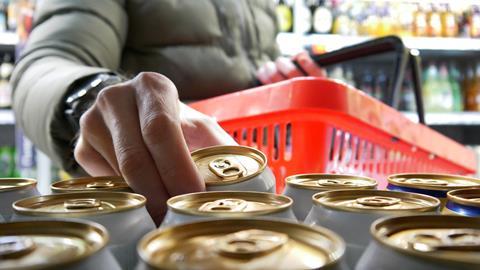
4. Symbols & independents must stock key products to avoid falling behind the market
There is a word of warning for retailers in the latest sales figures. Independents are dropping behind their rivals in terms of share in the past three months, losing 0.6ppts of value share versus last year.
“Forecourts and travel stores have seen strong share growth in RTD alcoholic beverages but major multiple grocer convenience is only 0.1ppts, revealing that symbols and independents are badly under-performing within the convenience channel,” says Circana’s Alex Lawrence.
“While symbols & independents have seen strong growth up 80% in the past 12 months in pre-mix cocktails, the product segment under-trades in these stores. Symbols & independents’ share of RTD is 31.8%, but share of pre-mix cocktails is just 20.8%, meaning that they are under-represented in the product segment that is driving growth of the entire market.
“Funkin Passion Fruit & Martini is a prime example of a product in strong growth in the wider market, which is significantly under-represented in this channel,” he adds.
Retailers that are confident in stocking premium products can still drive sales. Jack Matthews says: “We’re finding shoppers are wanting more premium options, too, like Bombay & Tonic. We want to crack canned cocktailers, but there’s a fine line between value and quality, so it’s challenging trying to strike that balance.
“Looking ahead, I think there will be an explosion of tequila products, but there’s a lot to debunk in spirits and I don’t think anyone has fully cracked it. Alcohol-free, for example, is still in its early stages of demand and now there’s an expectation from customers to have an alcohol-free option in each subcategory.”
By continuing to diversify their ranges and reflecting the trends and ingredients that RTD consumers are looking for, retailers can ensure the category remains a valuable source of profits in summer and beyond.
How retailers can tap into the booming ready-to-drink cocktail market with Funkin Cocktails

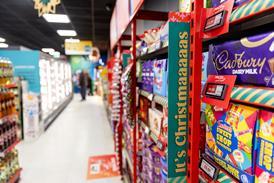







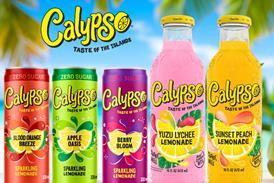



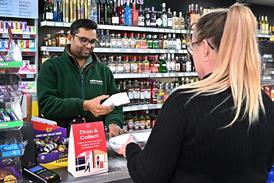








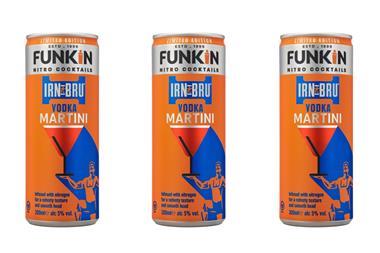










No comments yet